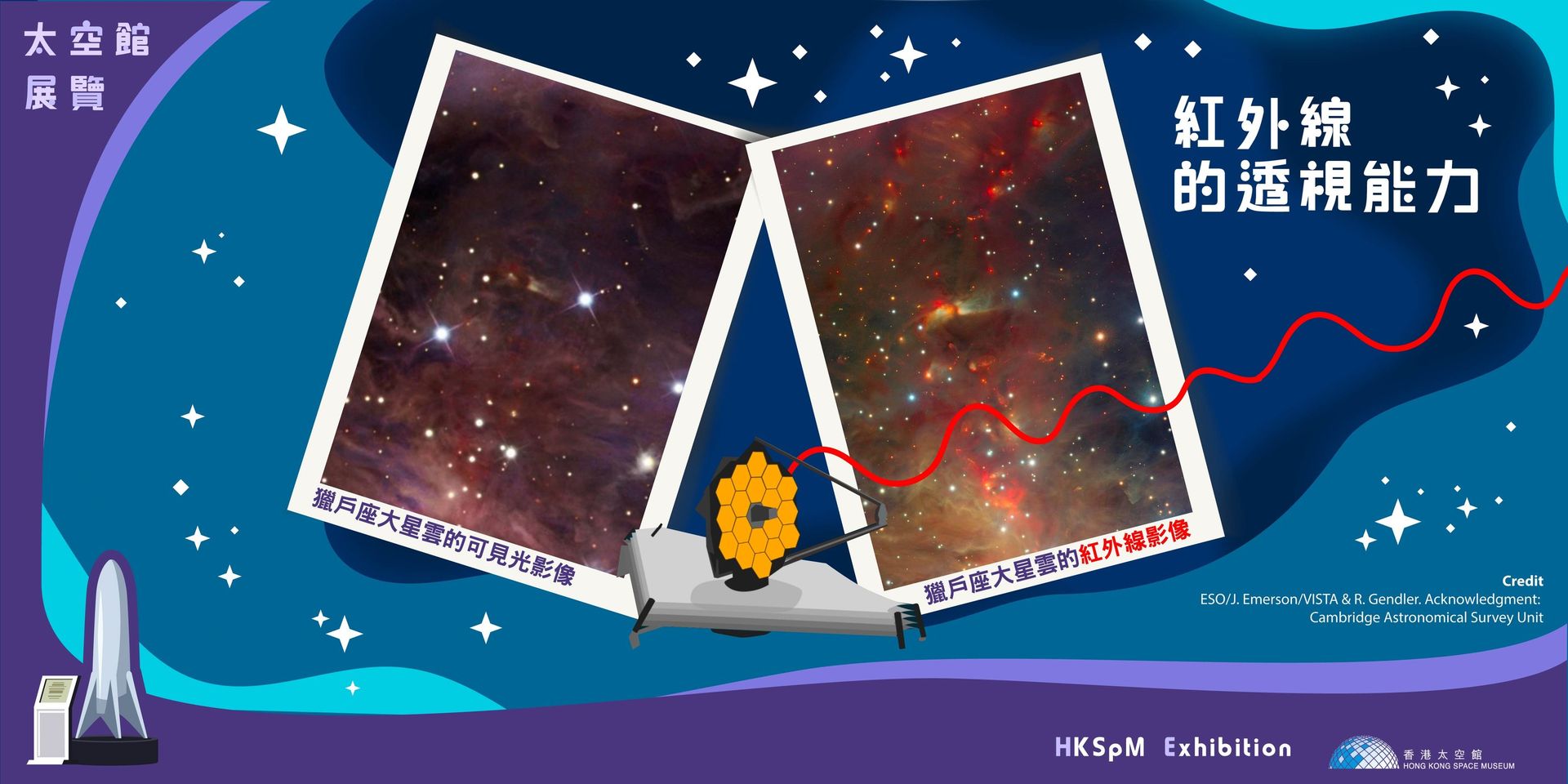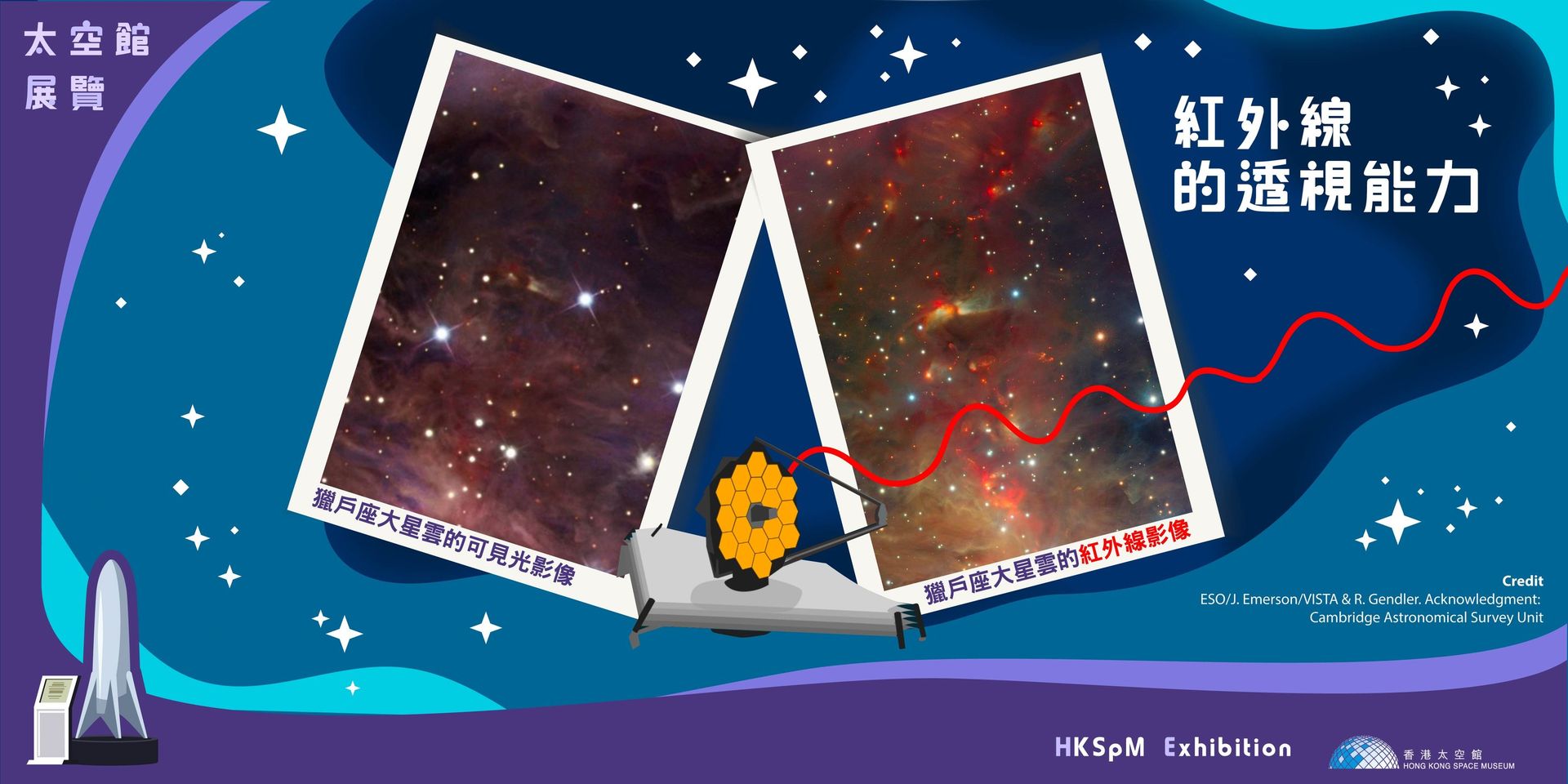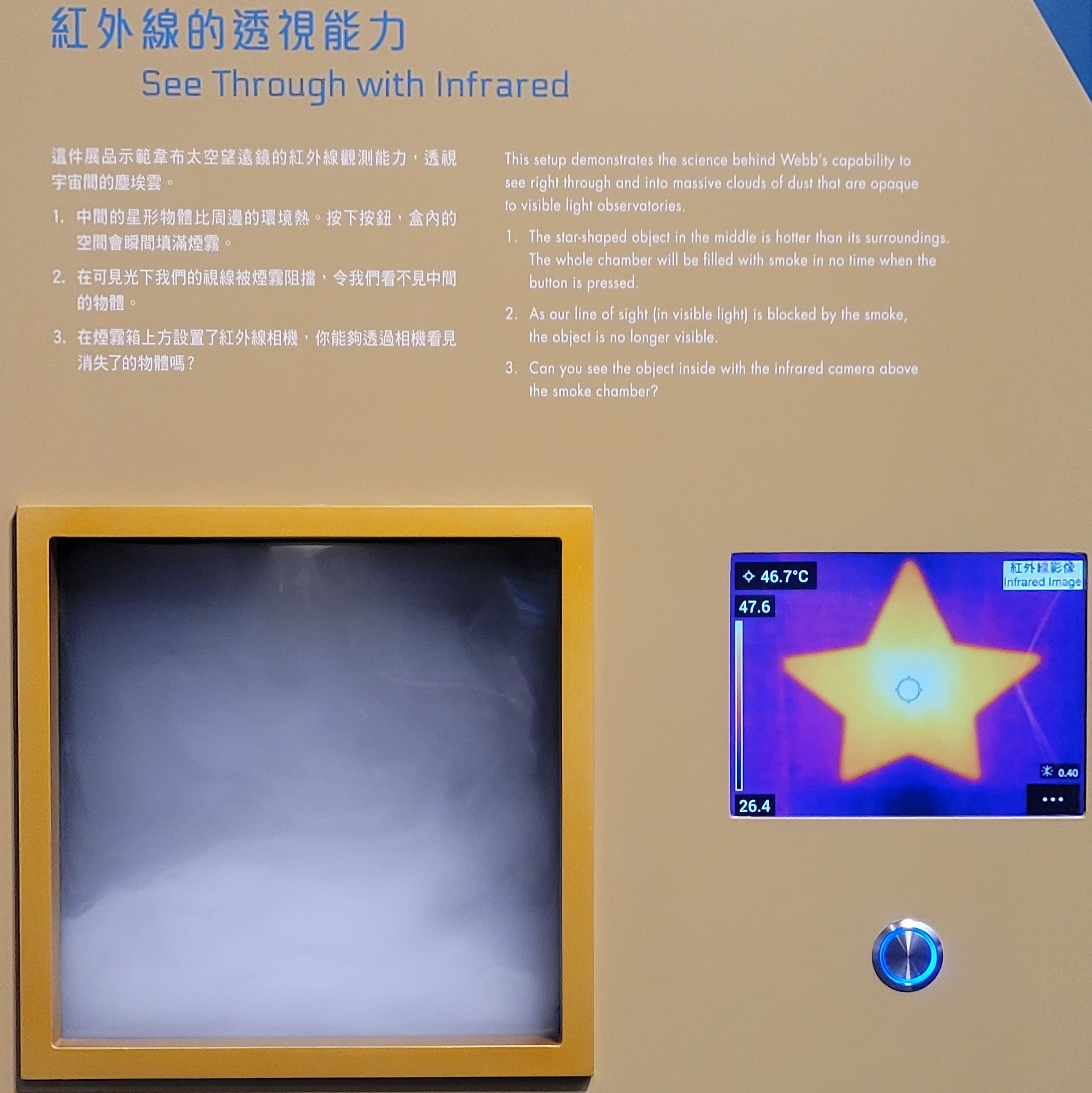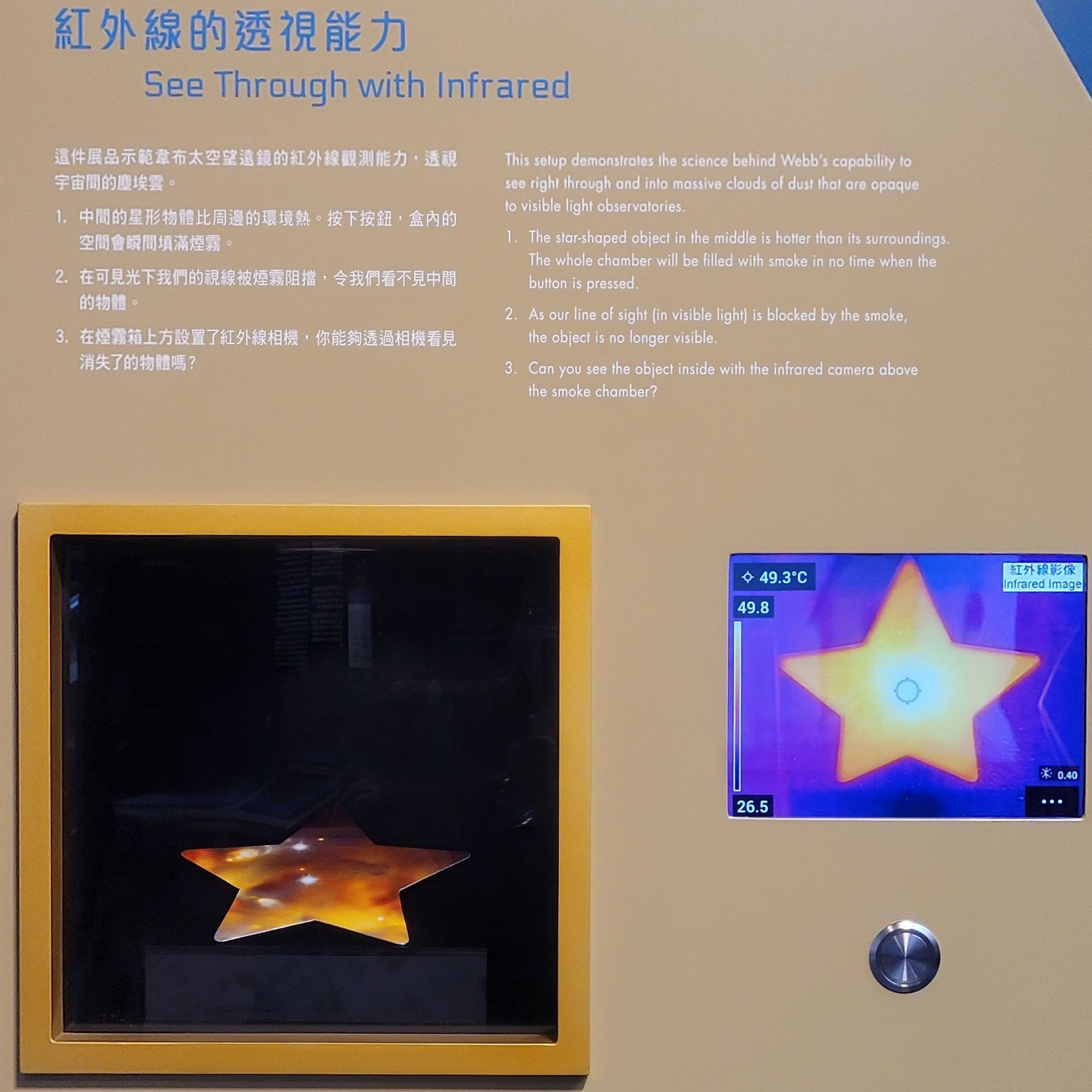Webb is an infrared observatory. We talked about the infrared in the electromagnetic spectrum before. Here, we introduce the application of infrared in astronomy.
Nebulae are clouds of dust and gas in space. Some nebulae originate from materials ejected by a massive star such as supernova explosions. If these materials collapse due to gravity, there is a chance that new stars will be "born". For this reason, astronomers refer to nebulae as nurseries for stars. But part of the visible starlight is obscured by dust and gas like a nursery is obscured by frosted glass and we can't see what's inside clearly.
To see through the nebula, you need to use an infrared telescope, like the Webb. Compared with visible light, infrared can "go straight through" (infrared is scattered less) in the nebula. By observing nebulae through infrared, astronomers can study nebulae' details and internal features, including the stellar "embryos" (protostellar disks). One of the aims of Webb is to shed light on the formation of stars.
A smoke chamber is included in the "Golden Eye on the Cosmos" exhibition to simulate the nebulae with dust and gas. An infrared camera, which simulates Webb, is placed on top of the chamber while the camera image is directed to a monitor. Can you notice the difference between the naked eye and infrared views when the chamber is filled with smoke?






